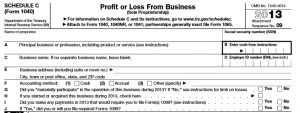It’s time for businesses to send out their annual information returns. These are the Form 1099s that are sent to to vendors when required. Let’s look first at who does not have to receive 1099s:
- Corporations (except attorneys)
- Entities you purchased tangible goods from
- Entities you purchased less than $600 from (except royalties; the limit there is $10)
- Where you would normally have to send a 1099 but you made payment by a credit or debit card
Otherwise, you need to send a Form 1099 to the vendor. The best way to check whether or not you need to send a 1099 to a vendor is to know this before you pay a vendor’s invoice. I tell my clients that they should have each vendor complete a Form W-9 before they pay the vendor. You can then enter the vendor’s taxpayer identification number into your accounting software (along with whether or not the vendor is exempt from 1099 reporting) on an ongoing basis.
Form 1099-NECs have a filing deadline of January 31, 2022 (for reporting 2021 nonemployee compensation). Form 1099-MISCs are used for all other 1099 reporting except interest, dividends, capital gains, etc. Payments of rent, royalties, advertising, crop insurance proceeds, substitute payments in lieu of dividends, attorney proceeds, other income (including gambling winnings not reportable on a Form W-2G), and nonqualified deferred compensation are just some of the items reported on a Form 1099-MISC.
Remember that besides the 1099 sent to the vendor, a copy goes to the IRS. If you file by paper, you likely do not have to file Form 1099-MISC with your state tax agency (that’s definitely the case in California). However, if you file 1099s electronically with the IRS you most likely will also need to file them electronically with your state tax agency (again, that’s definitely the case in California). It’s a case where paper filing might be easier than electronic filing.
IMPORTANT: The IRS is not sending Form 1099-NECs to state tax agencies. Thus, if you have a state filing requirement for your Forms 1099-NEC, you must separately file this with your state tax agency.
If you wish to file paper 1099s, you must order the forms from the IRS. The forms cannot be downloaded off the Internet. Make sure you also order Form 1096 from the IRS. This is a cover page used when submitting information returns (such as 1099s) to the IRS.
Note also that sole proprietors fall under the same rules for sending out 1099s. Let’s say you’re a professional gambler, and you have a poker coach that you paid $650 to last year. You must send him or her a Form 1099-NEC. Poker players who “swap” shares or have backers also fall under the 1099 filing requirement (issuing form 1099-MISC).
Remember, the deadline for submitting 1099-NECs for “Nonemployee Compensation” (e.g. independent contractors) to the IRS is now at the end of January: Those 1099s must be filed by Monday, January 31st.
Here are the deadlines for 2021 information returns:
- Monday, January 31st: Deadline for mailing most 1099s to recipients (postmark deadline);
- Monday, January 31st: Deadline for submitting 1099-NECs for Nonemployee Compensation to IRS;
- Monday, February 28th: Deadline for filing other paper 1099s with the IRS (postmark deadline);
- Tuesday, March 15th: Deadline for mailing and filing Form 1042-S; and
- Thursday, March 31st: Deadline for filing other 1099s electronically with the IRS.
Remember, if you are going to mail 1099s to the IRS send them certified mail, return receipt requested so that you have proof of the filing.
Also note that most 1099s must be mailed to recipients. Mail means the postal service, not email. The main exception to this is if the recipient has agreed in writing to receiving the 1099 electronically. I consider this the IRS’s means of trying to keep the Post Office in business.
